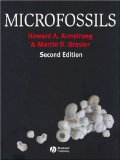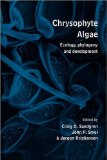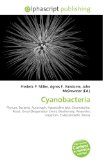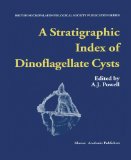Fossil algae
- 10th International Symposium on Fossil Algae Cluj-Napoca, Romania, 12-18 September 2011
- A Detailed Protocol for the Preparation and Orientation of Single Fossil Dinoflagellate Cysts for Transmission Electron Microscopy

- ADIAC - Automatic Diatom Identification And Classification
- An atlas of calcareous algae. Carboniferous algae of the Arctic Alaska

- Anisian Dasycladales from Upper Silesia and adjacent regions

- Benthic diatom community structure in boreal streams : Distribution patterns along environmental and spatial gradients
- C.I.M.P. Subcommission on Acritarchs
- Calcareous green algae from the Santonian Hochmoos Formation of Gosau (Northern Calcareous Alps, Austria, Lower Gosau Subgroup)

- Calcispheres
- Cell Ultrastructure of Diatoms - Implications for Phylogeny?

- Cenozoic Dasycladales. A photo-atlas of Lutetian species from French Cenozoic basins

- Cenozoic Dasycladales. A photo-atlas of Thanetian, Ypresian and Bartonian species from the Paris basin

- Climatically driven macroevolutionary patterns in the size of marine diatoms over the Cenozoic

- Coralline algae from the Bermoti Member (Upper Oligocene) of the Maniyara Fort Formation of Kachchh, Gujarat, India

- Cyanobacterial Image Gallery
- Diatom Collection
- Diatom Site
- Diatome home page
- Diatoms: From Micropaleontology to Isotope Geochemistry

- Diatoms as paleolimnological indicators: a reconstruction of Late Quaternary environments in two East African salt lakes

- Dinoflagellate cysts and Ammonoids from Upper Cretaceous sediments of the Pemberger Formation (Krappfeld, Carinthia, Austria)

- Dinoflagellate Cysts from the Jurassic of Poland
- Dinoflagellate Evolution and Diversity Through Time

- Dinoflagellates
- Early Jurassic dinoflagellate cysts from the Kraków-Silesia Monocline, southern Poland: a record from the Blanowice Formation at Mrzygłód

- Early Miocene Nonmarine Diatoms From the Pine Ridge Area, Sioux County, Nebraska

- Evolution of the diatoms: insights from fossil, biological and molecular data

- Fossil algae
- Fossil diatom flora from the marine Paleogene stratigraphic key section of northeast Kamchatka, Russia

- Home of Fossil Coralline Algae
- International Fossil Algae Association
- International Society for Diatom Research
- Jurassic dinoflagellate cyst zonation of Subboreal Northwest Europe

- Late Cretaceous Dinoflagellate Cysts (?Santonian-Maestrichtian) from the Southern Indian Ocean (Hole 748C)

- Late Triassic charophytes around the bone-bearing bed at Krasiejów (SW Poland) – palaeoecological and environmental remarks

- Life of diatoms in the world’s oceans

- Lower Cretaceous Dasyclad Algae from the Padurea Craiului Massif (Northern Apuseni Mountains, Romania)

- Middle Eocene diatoms from the marine Paleogene stratigraphic key section of northeast Kamchatka

- Molecular fossils of diatoms: Applications in petroleum geochemistry and palaeoenvironmental studies

- Neogene diatom biostratigraphy of the Iceland Sea site 907

- New Data on the Dasycladales from the Lower Eocene of Seyitgazi Region, Eskişehir, Central Turkey

- Non-geniculate Coralline Algae (Corallinales, Rhodophyta) From The Lower Oligocene Of Poljšica Pri Podnartu (Northern Slovenia)

- Oligocene and Earliest Miocene Diatom Biostratigraphy of ODP Leg 199 Site 1220, Equatorial Pacific

- Organic-walled dinoflagellate cysts from the Bathonian ore-bearing clays at Gnaszyn, Kraków-Silesia Homocline, Poland – a palaeoenvironmental approach

- Paleogene Halimeda Algal Biostratigraphy From Middle Atlas and Central High Atlas (Morocco), Paleoecology, Paleogeography and Some Taxonomical Considerations

- PETRALGA (Permian and Triassic Algae) Project The Project was launched in order to build a solid database for the fossil Algae from the Permian and Triassic epochs. A main going-on sub-project deals with a catalogue for the Dasycladales.
- Revision And Re-documentation Of M. Airoldi's Species Of Lithophyllum From The Tertiary Piedmont Basin

- Revision And Re-documentation Of M. Airoldi's Species Of Lithothamnion From The Tertiary Piedmont Basin (NW Italy)

- Salpingoporella, a common genus of Mesozoic Dasycladales (calcareous green algae)

- Silicoflagellates
- Silicoflagellates
- Silicoflagellates Recovered from Ocean Drilling Program Leg 207, Sites 1257 and 1258

- Stable Isotopes from Diatom Silica

- Stromatolite (Romanian)
- Stromatolites and calcareous algae of Münder Formation (Tithonian-Berriasian) from NW Germany

- Survey of Diatoms in Ocean Drilling Program Leg 207, Sites 1257 and 1258: Demerara Rise, Western Atlantic

- Taxonomy and Paleoenvironmental Indications of Fossil Diatoms from the Florissant Formation

- Upper Cenomanian – Lower Turonian (Cretaceous) calcareous algae from the Eastern Desert of Egypt: taxonomy and significance

- Upper Eocene - Lowermost Miocene charophyte succession in the Ebro Basin (Spain). Contribution to the charophyte biozonation in Western Europe

Books about fossil algae
| Microfossils This is a new and completely rewritten edition of the well-known text Microfossils (first published in 1980) covering all the major microfossil groups, with information on taxonomy, phylogeny, ecology and palaeoecology. |
|
Micropalaeontology in Petroleum Exploration |
|
| Chrysophyte Algae: Ecology, Phylogeny and Development Chrysophytes are beautiful and delicate organisms living mostly in freshwater. They are pivotal for studies of protistan evolution, studies of food web dynamics in oligotrophic freshwater ecosystems, and for assessment of environmental degradation resulting from eutrophication and acid rain. They also represent excellent model cellular systems for studying processes inherent in basic metabolism, biomineralization, endo- and exocytosis and macro-assembly of cell surface layers. This book gives a broad overview of chrysophytes and contains chapters by leading experts organized under the themes of phylogeny, systematics and evolution; development, physiology, and nutrition; and ecology, paleoecology, and reproduction. The book contains major contributions towards a reorganization of chrysophyte systematics, plus comprehensive reviews of chrysophyte basic metabolism, biomineralization and siliceous scale deposition, ecology, paleoecology, and a history of chrysophyte research. Contributors present reviews of the literature in their particular area and also present ideas for future research. |
|
| Advances in Stromatolite Geobiology Stromatolites are the most intriguing geobiological structures of the entire earth history since the beginning of the fossil record in the Archaean. Stromatolites and microbialites are interpreted as biosedimentological remains of biofilms and microbial mats. These structures are important environmental and evolutionary archives which give us information about ancient habitats, biodiversity, and evolution of complex benthic ecosystems. However, many geobiological aspects of these structures are still unknown or only poorly understood. The present proceedings highlight the new ideas and information on the formation and environmental setting of stromatolites presented at the occasion of the Kalkowsky Symposium 2008, held in Göttingen, Germany. |
|
| Cyanobacteria Cyanobacteria, also known as blue-green algae, blue-green bacteria or Cyanophyta, is a phylum of bacteria that obtain their energy through photosynthesis. The name "cyanobacteria" comes from the color of the bacteria. They are a significant component of the marine nitrogen cycle and an important primary producer in many areas of the ocean, but are also found in habitats other than the marine environment in particular cyanobacteria are known to occur in both freshwater, hypersaline inland lakes and in arid areas where they are a major component of biological soil crusts. |
|
| A Stratigraphic Index of Dinoflagellate Cysts The aim of this volume in the British Micropalaeontological Society (BMS) Occasional Publication Series is to review the present state of knowledge concerning the stratigraphic distribution of dinoflagellate cysts in British sediments. Since the BMS Series in 1978, it has been obvious that a gap has existed in its range. The principle reasons for the lack of a dinoflagellate cyst volume is that the intensive study of these microfossils is relatively new to geological science (relative to the levels of maturity reached in foraminiferal and ostracod studies, for example). This volume seeks to fill this gap, covering dinoflaggellate cysts of the Triassic, Jurassic, Cretaceous, Tertiary and Quaternary System. |





